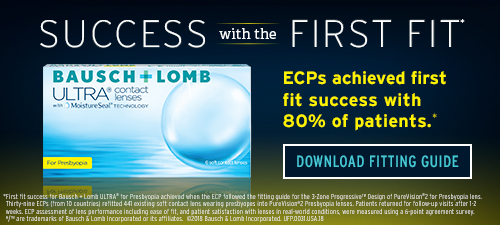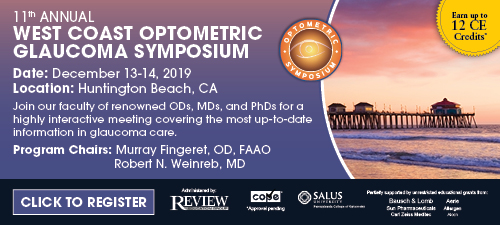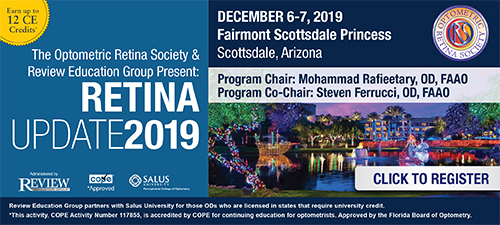
A
weekly e-journal by Art Epstein, OD, FAAO
Off the Cuff: Scummy Scamster, Hidden Agenda or Just Plain Angry?
By now most of you have read or at least heard of “The Great American Eye-Exam Scam,” written by Yascha Mounk. Like many of you, my first thought was that this was a bought-and-paid-for hatchet job and that Mounk was getting something from someone for writing it. As I usually do, I Googled Yascha Mounk, and as I learned more about the man, I couldn’t help but feel that the shill shoe just didn’t seem to fit. While Mounk and I share many of the same concerns about the current state of our democracy, we are clearly very far apart on what I consider a self-evident public health issue. Confused, I went back and re-read his piece again. Yascha Mounk’s journey to optometry’s dark side began with losing a pair of eyeglasses during a frightening and traumatic incident. The inability to easily replace them compounded things and was likely sufficiently frustrating to create a flash point intense enough to prompt writing a piece with a bit less thought than would be typical of someone so otherwise thoughtful and thorough.
|
|||||
 |
||
| Prevalence of Ocular Surface Disease and Corneal Irregularity and Outcomes in Patients Using Therapeutic Scleral Lenses at a Tertiary Care Center | ||||
This retrospective study reviewed 133 patients evaluated for scleral contact lens (ScCL) between Jan. 1, 2010, and Dec. 31, 2015, at the University of Illinois at Chicago (UIC) Contact Lens Service to describe indications for ScCL evaluation, previous treatments and outcomes of patients prescribed ScCL at a tertiary referral center. Patient demographics, ocular history, indications for evaluation, previous treatments, presence of punctate epithelial erosions, number of lenses ordered, follow-up visits, best-corrected visual acuity before ScCL and visual acuity with ScCL were evaluated. Patients were categorized based on primary indication for ScCL evaluation as ocular surface disease (OSD) or corneal irregularity (CI). The primary outcome was visual acuity.
Visual acuity improved from logarithm of the minimal angle of resolution 0.3±0.4 at presentation to 0.1±0.2 with ScCL in all eyes (n=223), and from 0.3±0.5 to 0.1±0.2 (n=164) in the OSD group and 0.5±0.4 to 0.2±0.2 (n=59) in the CI group. Seventy percent of patients were evaluated for bilateral ScCL evaluation. Indication for ScCL evaluation was OSD in 71% (n=95) of patients, with 20% having a secondary diagnosis of CI. Corneal irregularity was the primary diagnosis in 29% of patients (n=38), with 50% having a secondary diagnosis of OSD. Ocular surface disease was common in this tertiary referral patient population and was a primary or secondary indication for ScCL evaluation in 85.7% (n=114) of patients evaluated for ScCL. Scleral contact lenses improved visual outcomes in patients with both primary diagnoses of CI and OSD. |
||||
SOURCE: Scanzera AC, Bontu S, Joslin CE, et al. Prevalence of ocular surface disease and corneal irregularity and outcomes in patients using therapeutic scleral lenses at a tertiary care center. Eye Contact Lens. 2019; Nov 29. [Epub ahead of print]. |
||||
 |
||
| Potentially Inappropriate Prescriptions of Anticholinergic Medications in Patients with Closed-angle Glaucoma | ||||
Researchers aimed to identify anticholinergic drugs prescribed to patients diagnosed with closed-angle glaucoma in Colombia. The cross-sectional study identified the prescribing patterns of cholinergic antagonists related to the increased intraocular pressure in patients diagnosed with closed-angle glaucoma from a Colombian database. The Anticholinergic Drug Scale was used to quantify the anticholinergic burden.
Researchers identified 1,958 patients with closed-angle glaucoma, with a mean age of 70.5±10.3 years, 72.9% of whom were women. Cholinergic antagonists were prescribed in at least 32.4% of cases. An age range of between 75 and 84 years, and being aged 85 years or older were associated with a greater probability of receiving an anticholinergic burden between 1 and 2 points. Females had a higher probability of receiving an anticholinergic burden ≥3 points. Interactions between antiglaucoma medications and anticholinergic treatments were identified in 32.1% of the patients. Researchers reported that most patients were prescribed multiple antiglaucoma medications, reflecting a large number of potentially inappropriate prescriptions, with anticholinergic drugs related to the increased intraocular pressure. |
||||
SOURCE: Valladales-Restrepo LF, Machado-Alba JE. Potentially inappropriate prescriptions of anticholinergic medications in patients with closed-angle glaucoma. Int Ophthalmol. 2019 Dec 3. [Epub ahead of print] |
||||
 |
||
| Masqueraders of Multiple Evanescent White Dot Syndrome (MEWDS) | ||||
Included in this study were patients who presented with clinical findings compatible with a diagnosis of multiple evanescent white dot syndrome (MEWDS) but were ultimately diagnosed with an alternative inflammatory, infectious or neoplastic disorder. Clinical records and multimodal imaging findings including fundus photography, fundus autofluorescence (FAF), fluorescein angiography (FA), indocyanine green angiography (ICGA), optical coherence tomography (OCT) and OCT angiography (OCTA) were analyzed. Inclusion criteria defined as a masquerade syndrome for MEWDS included the presence of disseminated grayish-white outer retinal spots that were hyperautofluorescent on FAF and associated with ellipsoid zone (EZ) disruption on OCT. Twenty-two eyes of 13 patients were identified. All patients presented with the classic findings of MEWDS listed above. A MEWDS-like presentation was bilateral in nine of 13 patients (69%). Final diagnosis was determined based on additional investigations including serologies and biopsy. These diagnoses included syphilis (three patients), lymphoma (three patients), idiopathic multifocal choroiditis (two patients), idiopathic retinal phlebitis (one patient), idiopathic acute zonal occult outer retinopathy (one patient), sarcoidosis (one patient), tuberculosis (one patient) and cancer-associated retinopathy (one patient). The outer retinal lesions and imaging findings resolved with treatment for the associated systemic disorders. Investigators wrote that widespread grayish-white outer retinal spots associated with hyperautofluorescence on FAF, and disruption of the EZ on OCT were not pathognomonic for MEWDS. They added that a high index of suspicion must be maintained for masqueraders of MEWDS, which can include serious inflammatory, infectious and neoplastic disorders. |
||||
SOURCE: Russell JF, Pichi F, Scott NL, et al. Masqueraders of multiple evanescent white dot syndrome (MEWDS). Int Ophthalmol. 2019; Dec 2. [Epub ahead of print]. |
||||
| News & Notes | ||||||||
| AAOF Announces the 2019 VSP Global Scholarship Recipients The American Academy of Optometry Foundation announced the recipients of this year’s Practice Excellence Scholarships. Nearly $200,000 was awarded to several top-performing fourth-year optometry students in the United States, Puerto Rico and Canada, as well as four additional international students from Australia. Since 2010, VSP Global has provided more than $2.4 million in scholarship support to hundreds of optometry students. View the 2019 Practice Excellence Scholarship recipients. |
||||||||
| RightEye Vision System Receives Breakthrough Device Designation from FDA for Parkinson’s Disease Test RightEye announced that the RightEye Vision System received FDA Breakthrough Device Designation, designed to streamline the market clearance and approval process for certain medical devices that provide for more effective treatment or diagnosis of life-threatening or irreversibly debilitating diseases or conditions. RightEye received the designation for a device using objective eye movement measurements to aid in the assessment of Parkinson’s disease. Read more. |
||||||||
| NORA & Pink Concussions Offer Educational Resource on Women & Concussions Less research exists about the effects of traumatic brain injuries (TBI) such as concussions on women, although a growing body of evidence suggests that females have a higher rate of concussions than men playing sports with similar rules, with one study showing that women athletes are 50 percent more likely than male athletes to have a sports-related concussion. NORA and PINK Concussions have developed a new educational resource titled “Women and Concussions” that provides information on how concussions can affect women differently than men. Read more. |
||||||||
|
||||||||
|
||||||||
|
Optometric Physician™ (OP) newsletter is owned and published by Dr. Arthur Epstein. It is distributed by the Review Group, a Division of Jobson Medical Information LLC (JMI), 11 Campus Boulevard, Newtown Square, PA 19073. HOW TO ADVERTISE |



